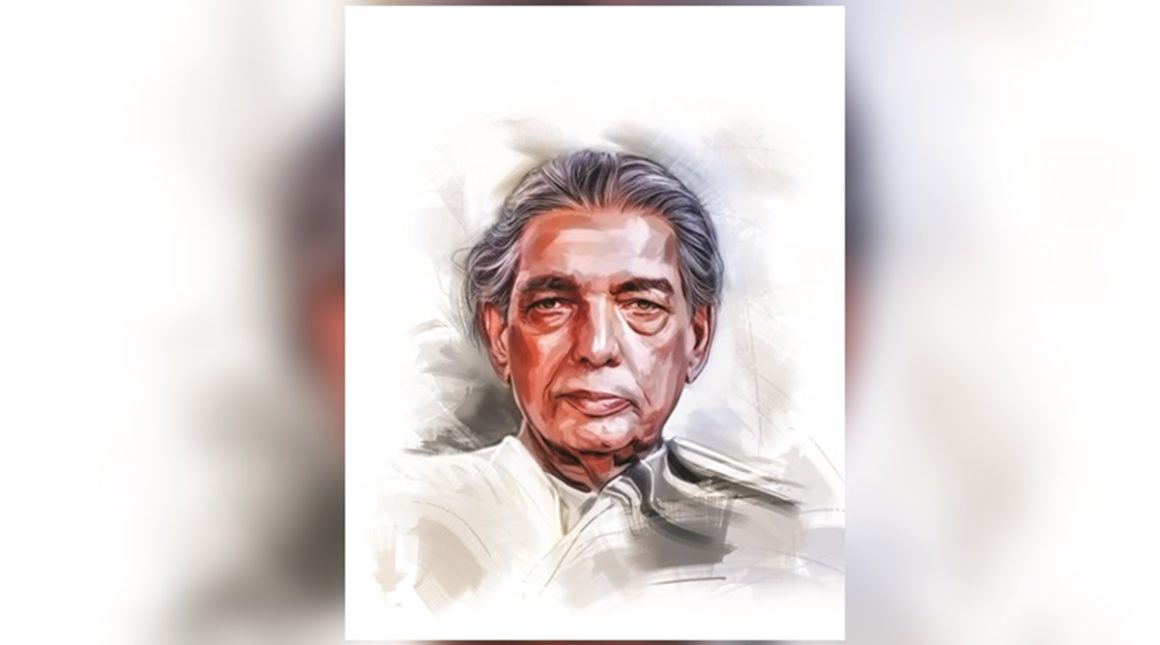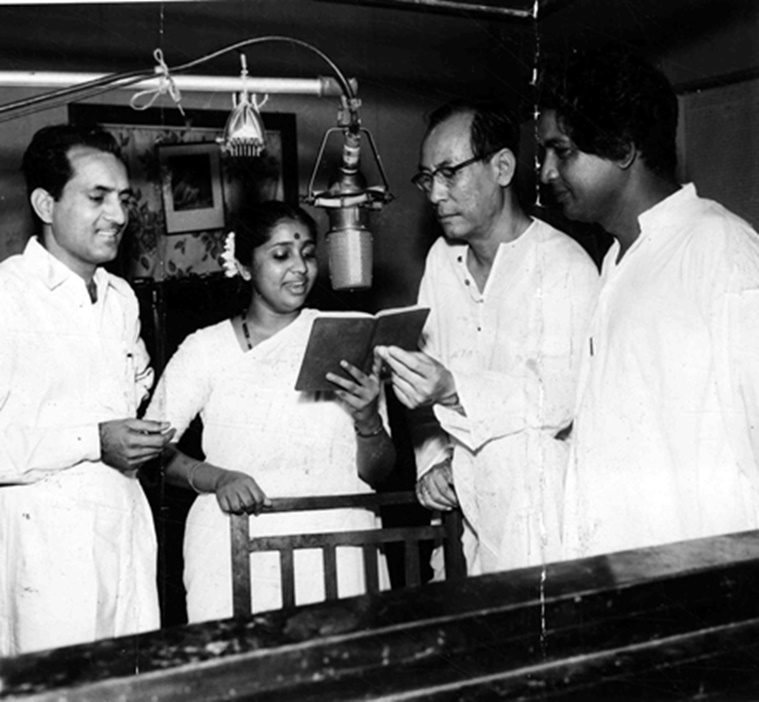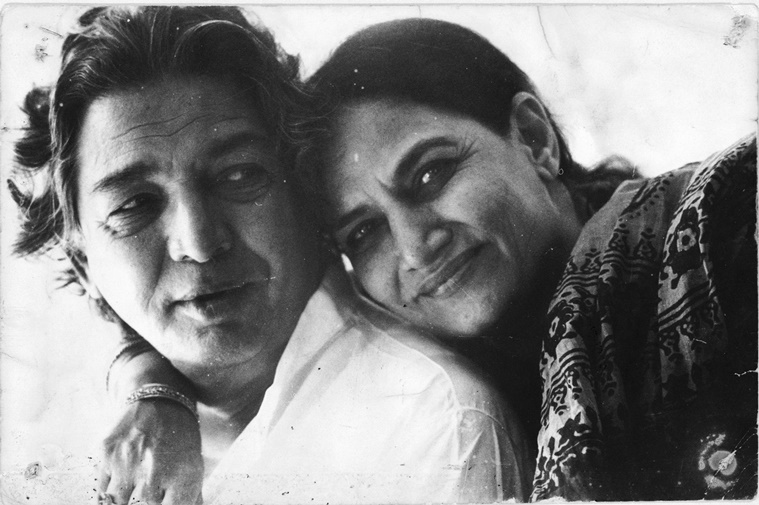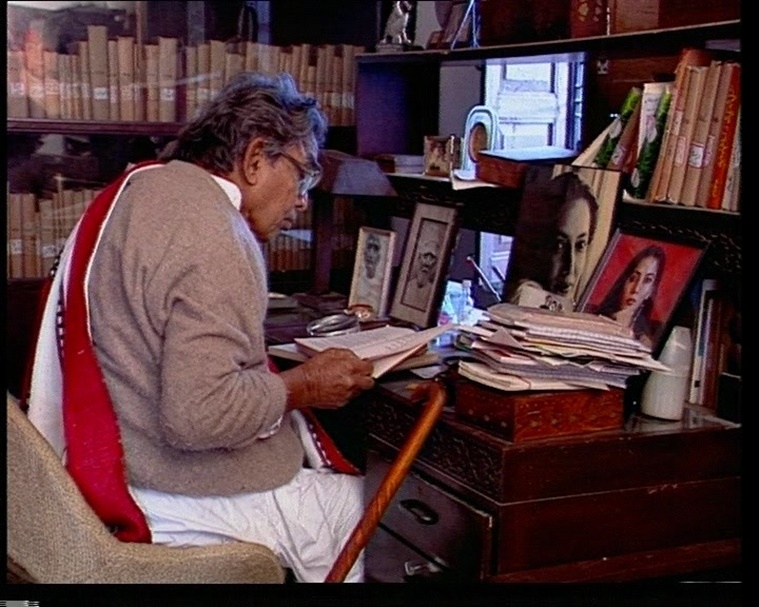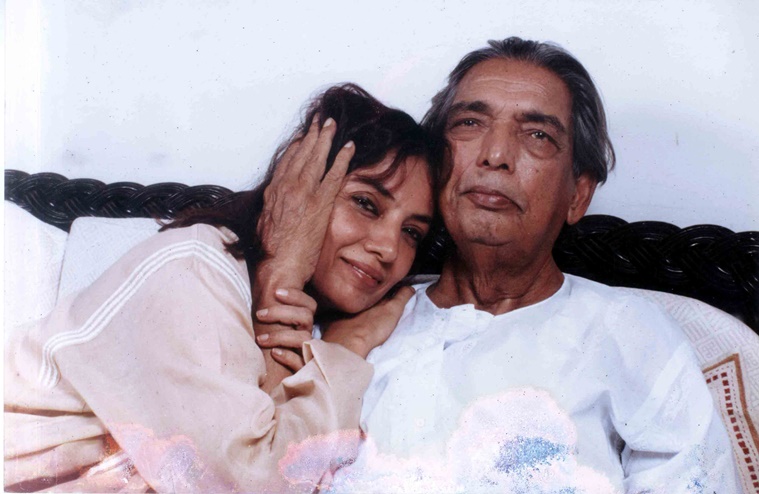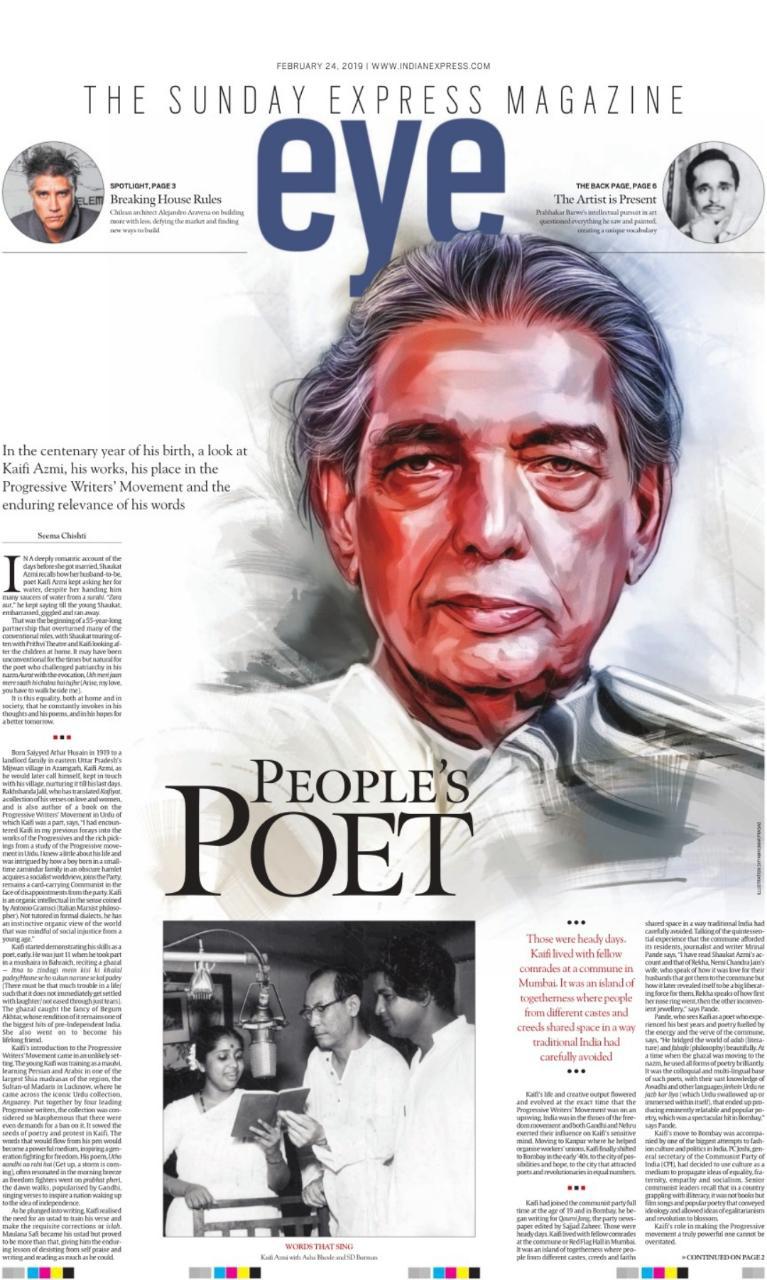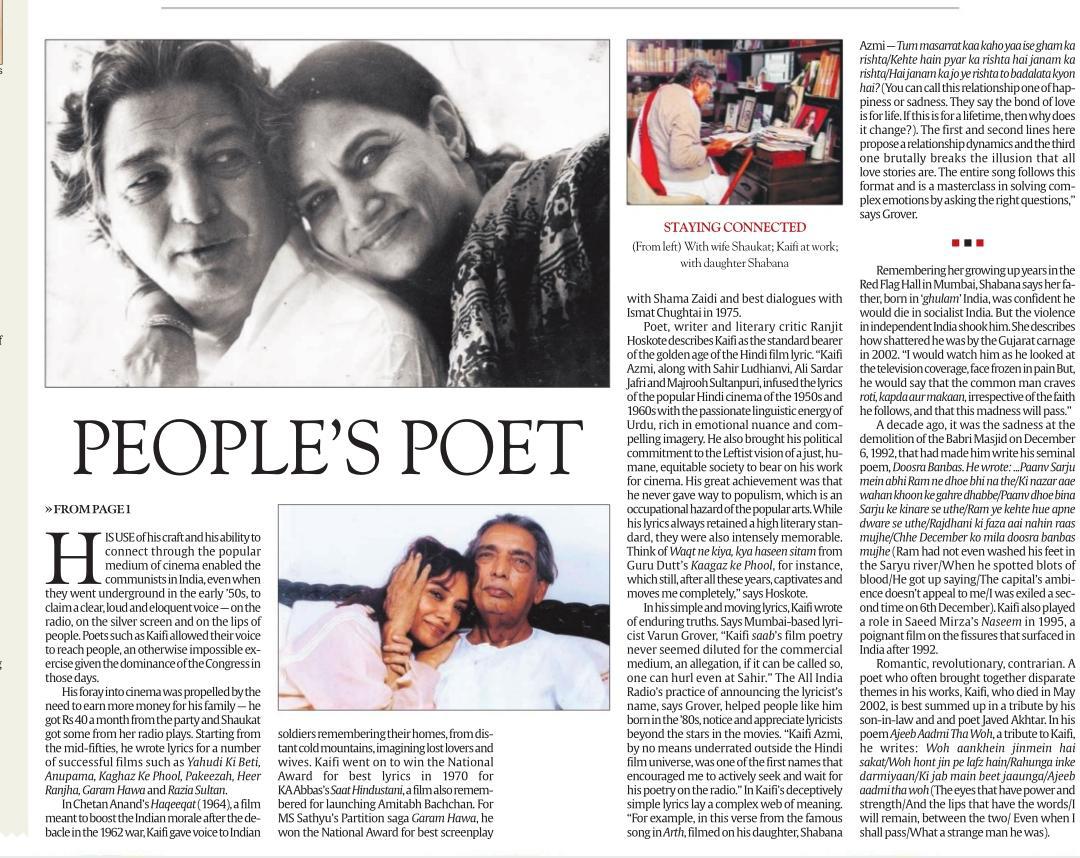In a deeply romantic account of the days before she got married, Shaukat Azmi recalls how her husband-to-be, poet Kaifi Azmi kept asking her for water, despite her handing him many saucers of water from a surahi. “Zara aur,” he kept saying till the young Shaukat, embarrassed, giggled and ran away.
That was the beginning of a 55-year-long partnership that overturned many of the conventional roles, with Shaukat touring often with Prithvi Theatre and Kaifi looking after the children at home. It may have been unconventional for the times but natural for the poet who challenged patriarchy in his nazm Aurat with the evocation, Uth meri jaan mere saath hi chalna hai tujhe (Arise, my love, you have to walk beside me).
It is this equality, both at home and in society, that he constantly invokes in his thoughts and his poems, and in his hopes for a better tomorrow.
Born Saiyyed Athar Husain in 1919 to a landlord family in eastern Uttar Pradesh’s Mijwan village in Azamgarh, Kaifi Azmi, as he would later call himself, kept in touch with his village, nurturing it till his last days. Rakhshanda Jalil, who has translated Kaifiyat, a collection of his verses on love and women, and is also author of a book on the Progressive Writers’ Movement in Urdu of which Kaifi was a part, says, “I had encountered Kaifi in my previous forays into the works of the Progressives and the rich pickings from a study of the Progressive movement in Urdu. I knew a little about his life and was intrigued by how a boy born in a small-time zamindar family in an obscure hamlet acquires a socialist worldview, joins the Party, remains a card-carrying Communist in the face of disappointments from the party. Kaifi is an organic intellectual in the sense coined by Antonio Gramsci (Italian Marxist philosopher). Not tutored in formal dialects, he has an instinctive organic view of the world that was mindful of social injustice from a young age.”
Kaifi started demonstrating his skills as a poet, early. He was just 11 when he took part in a mushaira in Bahraich, reciting a ghazal — Itna to zindagi mein kisi ki khalal padey/Hasne se ho sukun na rone se kal padey (There must be that much trouble in a life/ such that it does not immediately get settled with laughter/ not eased through just tears). The ghazal caught the fancy of Begum Akhtar, whose rendition of it remains one of the biggest hits of pre-Independent India. She also went on to become his lifelong friend.
Kaifi’s introduction to the Progressive Writers’ Movement came in an unlikely setting. The young Kaifi was training as a maulvi, learning Persian and Arabic in one of the largest Shia madrasas of the region, the Sultan-ul Madaris in Lucknow, where he came across the iconic Urdu collection, Angaarey. Put together by four leading Progressive writers, the collection was considered so blasphemous that there were even demands for a ban on it. It sowed the seeds of poetry and protest in Kaifi. The words that would flow from his pen would become a powerful medium, inspiring a generation fighting for freedom. His poem, Utho aandhi aa rahi hai (Get up, a storm is coming), often resonated in the morning breeze as freedom fighters went on prabhat pheri, the dawn walks, popularised by Gandhi, singing verses to inspire a nation waking up to the idea of independence.
As he plunged into writing, Kaifi realised the need for an ustad to train his verse and make the requisite corrections or islah. Maulana Safi became his ustad but proved to be more than that, giving him the enduring lesson of desisting from self-praise, and writing and reading as much as he could.
Kaifi’s life and creative output flowered and evolved at the exact time that the Progressive Writers’ Movement was on an upswing. India was in the throes of the freedom movement and both Gandhi and Nehru exerted their influence on Kaifi’s sensitive mind. Moving to Kanpur where he helped organise workers’ unions, Kaifi finally shifted to Bombay in the early ’40s, to the city of possibilities and hope, to the city that attracted poets and revolutionaries in equal numbers.
Kaifi had joined the Communist party full time at the age of 19 and in Bombay, he began writing for Qaumi Jang, the party newspaper edited by Sajjad Zaheer. Those were heady days. Kaifi lived with fellow comrades at the commune or Red Flag Hall in Mumbai. It was an island of togetherness where people from different castes, creeds and faiths shared space in a way traditional India had carefully avoided. Talking of the quintessential experience that the commune afforded its residents, journalist and writer Mrinal Pande says, “I have read Shaukat Azmi’s account and that of Rekha, Nemi Chandra Jain’s wife, who speak of how it was love for their husbands that got them to the commune but how it later revealed itself to be a big liberating force for them. Rekha speaks of how first her nose ring went, then the other inconvenient jewellery,” says Pande.
Pande, who sees Kaifi as a poet who experienced his best years and poetry fuelled by the energy and the verve of the commune, says, “He bridged the world of adab (literature) and falsafa (philosophy) beautifully. At a time when the ghazal was moving to the nazm, he used all forms of poetry brilliantly. It was the colloquial and multi-lingual base of such poets, with their vast knowledge of Awadhi and other languages jinhein Urdu ne jazb kar liya (which Urdu swallowed up or immersed within itself), that ended up producing eminently relatable and popular poetry, which was a spectacular hit in Bombay,” says Pande.
Kaifi’s move to Bombay was accompanied by one of the biggest attempts to fashion culture and politics in India. PC Joshi, general secretary of the Communist Party of India(CPI), had decided to use culture as a medium to propagate ideas of equality, fraternity, empathy and socialism. Senior communist leaders recall that in a country grappling with illiteracy, it was not books but film songs and popular poetry that conveyed ideology and allowed ideas of egalitarianism and revolution to blossom.
Kaifi’s role in making the Progressive movement a truly powerful one cannot be overstated.
His use of his craft and his ability to connect through the popular medium of cinema enabled the communists in India, even when they went underground in the early ’50s, to claim a clear, loud and eloquent voice — on the radio, on the silver screen and on the lips of people. Poets such as Kaifi allowed their voice to reach people, an otherwise impossible exercise given the dominance of the Congress in those days.
His foray into cinema was propelled by the need to earn more money for his family — he got Rs 40 a month from the party and Shaukat got some from her radio plays. Starting from the mid-fifties, he wrote lyrics for a number of successful films such as Yahudi Ki Beti, Anupama, Kaghaz Ke Phool, Pakeezah, Heer Ranjha, Garam Hawa and Razia Sultan.
In Chetan Anand’s Haqeeqat (1964), a film meant to boost the Indian morale after the debacle in the 1962 war, Kaifi gave voice to Indian soldiers remembering their homes, from distant cold mountains, imagining lost lovers and wives. Kaifi went on to win the National Award for best lyrics in 1970 for KA Abbas’s Saat Hindustani, a film also remembered for launching Amitabh Bachchan. For MS Sathyu’s Partition saga Garam Hawa, he won the National Award for best screenplay with Shama Zaidi and best dialogues with Ismat Chughtai in 1975.
Poet, writer and literary critic Ranjit Hoskote describes Kaifi as the standard bearer of the golden age of the Hindi film lyric. “Kaifi Azmi, along with Sahir Ludhianvi, Ali Sardar Jafri and Majrooh Sultanpuri, infused the lyrics of the popular Hindi cinema of the 1950s and 1960s with the passionate linguistic energy of Urdu, rich in emotional nuance and compelling imagery. He also brought his political commitment to the Leftist vision of a just, humane, equitable society to bear on his work for cinema. His great achievement was that he never gave way to populism, which is an occupational hazard of the popular arts. While his lyrics always retained a high literary standard, they were also intensely memorable. Think of Waqt ne kiya, kya haseen sitam from Guru Dutt’s Kaagaz ke Phool, for instance, which still, after all these years, captivates and moves me completely,” says Hoskote.
In his simple and moving lyrics, Kaifi wrote of enduring truths. Says Mumbai-based lyricist Varun Grover, “Kaifi saab’s film poetry never seemed diluted for the commercial medium, an allegation, if it can be called so, one can hurl even at Sahir.” The All India Radio’s practice of announcing the lyricist’s name, says Grover, helped people like him born in the ’80s, notice and appreciate lyricists beyond the stars in the movies. “Kaifi Azmi, by no means underrated outside the Hindi film universe, was one of the first names that encouraged me to actively seek and wait for his poetry on the radio.” In Kaifi’s deceptively simple lyrics lay a complex web of meaning. “For example, in this verse from the famous song in Arth, filmed on his daughter, Shabana Azmi — Tum masarrat kaa kaho yaa ise gham ka rishta/Kehte hain pyar ka rishta hai janam ka rishta/Hai janam ka jo ye rishta to badalata kyon hai? (You can call this relationship one of happiness or sadness. They say the bond of love is for life. If this is for a lifetime, then why does it change?). The first and second lines here propose a relationship dynamics and the third one brutally breaks the illusion that all love stories are. The entire song follows this format and is a masterclass in solving complex emotions by asking the right questions,” says Grover.
Remembering her growing up years in the Red Flag Hall in Mumbai, Shabana says her father, born in ‘ghulam’ India, was confident he would die in socialist India. But the violence in independent India shook him. She describes how shattered he was by the Gujarat carnage in 2002. “I would watch him as he looked at the television coverage, face frozen in pain. But, he would say that the common man craves roti, kapda aur makaan, irrespective of the faith he follows, and that this madness will pass.”
A decade ago, it was the sadness at the demolition of the Babri Masjid on December 6, 1992, that had made him write his seminal poem, Doosra Banbas. He wrote: …Paanv Sarju mein abhi Ram ne dhoe bhi na the/Ki nazar aae wahan khoon ke gahre dhabbe/Paanv dhoe bina Sarju ke kinare se uthe/Ram ye kehte hue apne dware se uthe/Rajdhani ki faza aai nahin raas mujhe/Chhe December ko mila doosra banbas mujhe (Ram had not even washed his feet in the Saryu river/When he spotted blots of blood/He got up saying/The capital’s ambience doesn’t appeal to me/I was exiled a second time on 6th December). Kaifi also played a role in Saeed Mirza’s Naseem in 1995, a poignant film on the fissures that surfaced in India after 1992.
Romantic, revolutionary, contrarian. A poet who often brought together disparate themes in his works, Kaifi, who died in May 2002, is best summed up in a tribute by his son-in-law and and poet Javed Akhtar. In his poem Ajeeb Aadmi Tha Woh, a tribute to Kaifi, he writes: Woh aankhein jinmein hai sakat/Woh hont jin pe lafz hain/Rahunga inke darmiyaan/Ki jab main beet jaaunga/Ajeeb aadmi tha woh (The eyes that have power and strength/And the lips that have the words/I will remain, between the two/ Even when I shall pass/What a strange man he was).
This article appeared in print with the headline ‘People’s Poet’
Source: https://indianexpress.com/article/express-sunday-eye/peoples-poet-5594273/lite/

